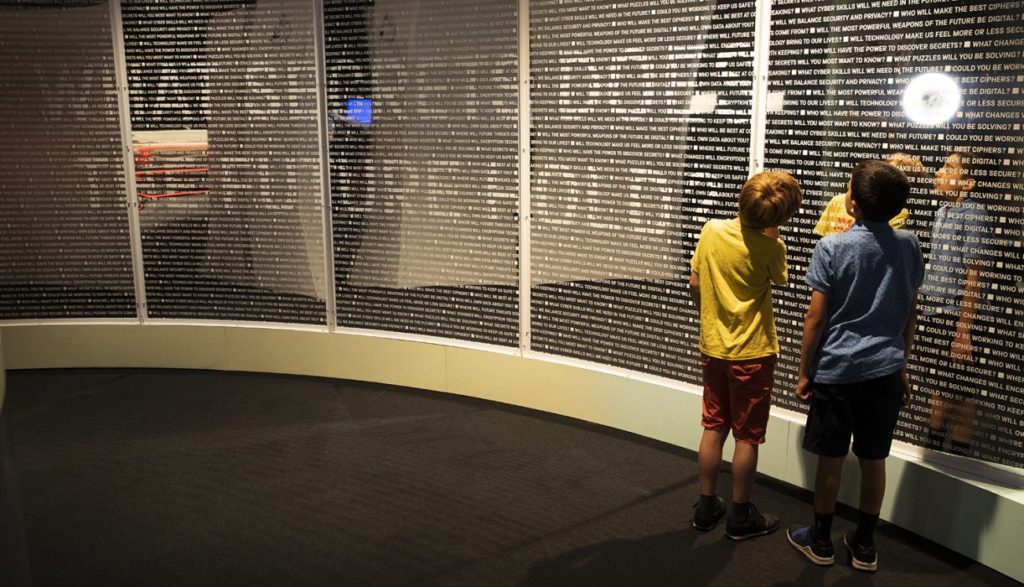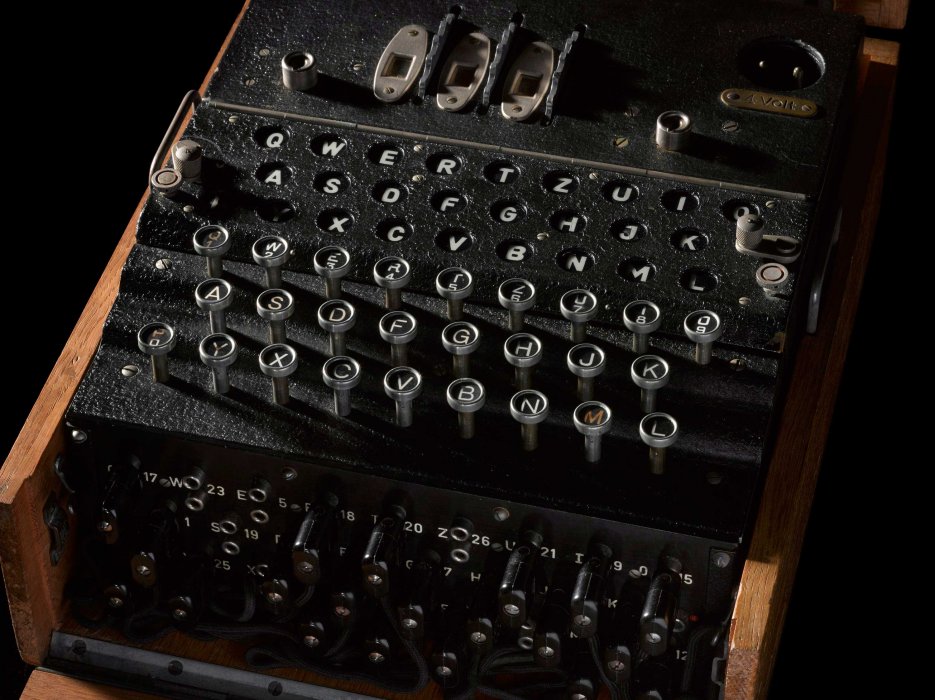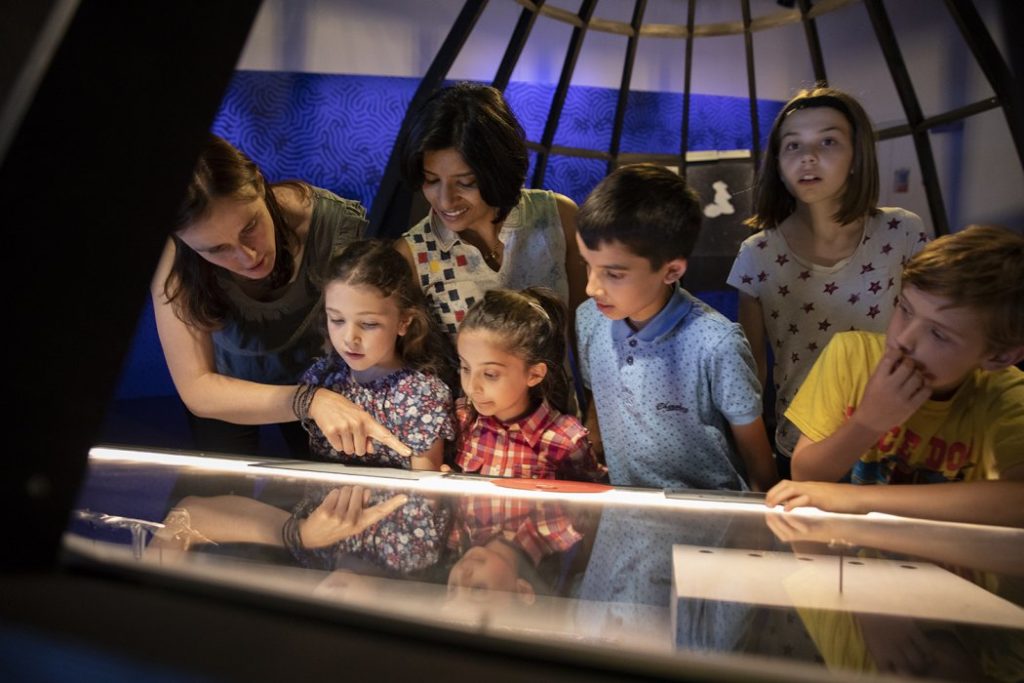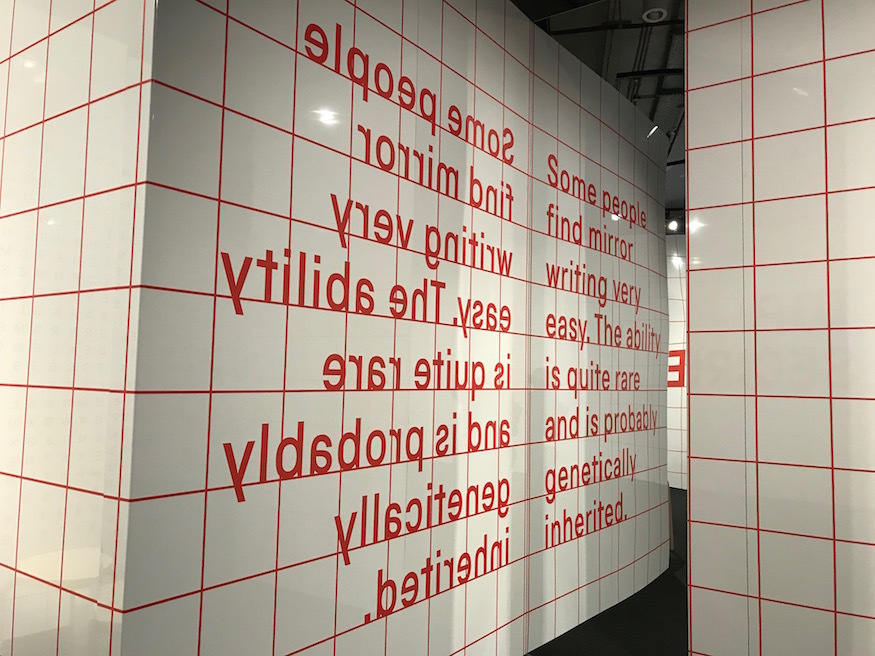Top Secret: from ciphers to cyber security reveals fascinating stories from the trenches of the first world war to the latest developments in the world of cyber security. It’s an opportunity for people to step behind the scenes of one of the UK’s most secret organisations: GCHQ, the UK’s intelligence, security and cyber agency; and discover the amazing stories of innovation that have made its work possible over the last 100 years.
 The exhibition aims to enthuse and excite a broad range of visitors about the vital – sometimes life and death – importance of concealing and revealing secret messages. In particular we wanted to engage family audiences and to help inspire the next generation’s interest in the science and technology of secret communications and cyber security.
The exhibition aims to enthuse and excite a broad range of visitors about the vital – sometimes life and death – importance of concealing and revealing secret messages. In particular we wanted to engage family audiences and to help inspire the next generation’s interest in the science and technology of secret communications and cyber security.
Our unique access to GCHQ’s collections and people gave us a fantastic opportunity to do this, but also raised some challenges – the objects were often visually unexciting (lots of metal boxes and things that look like typewriters); the stories and technologies complex; and the people deliberately anonymous (some 6,000 people work for GCHQ, but only a handful of those are able to be publicly identified).
How did we approach making the content and interpretation family friendly?

Everyday examples – We used everyday examples in order to help visitors make connections between their own lives and the stories and people they discover. In our section exploring the contemporary communication landscape, we have tried to emphasise examples that resonate with our visitors and have relevance to their daily lives – for example, an animation showing how key encryption keeps our WhatsApp messages and online banking safe and secure.
Promote Science Talk – we wanted to help ground visitors in the reality of the stories they encounter within the exhibition and get them talking. For example, a playful recreation of a 1960s suburban bungalow that was home to Soviet spies during the Cold War helps bring context to their story. We wanted to get visitors discussing the fact that these dramatic, sometimes world-changing events are happening to – and because of – the actions of people like them.
 People and skills – In our content choices and interpretation we aimed to draw out examples of the diverse people and skill sets that have underpinned secret communications work throughout history. We wanted to help visitors recognise science skills and the people who use them in all their varied forms. For example, while we celebrate the ‘genius’ of figures like Alan Turing, we also recognise the invaluable contribution to Second World War codebreaking made by vast teams of people who don’t fit the ‘rarefied genius’ stereotype, like the largely female cohort of radio operators whose job it was to intercept German Enigma messages and send them to Bletchley Park for decryption.
People and skills – In our content choices and interpretation we aimed to draw out examples of the diverse people and skill sets that have underpinned secret communications work throughout history. We wanted to help visitors recognise science skills and the people who use them in all their varied forms. For example, while we celebrate the ‘genius’ of figures like Alan Turing, we also recognise the invaluable contribution to Second World War codebreaking made by vast teams of people who don’t fit the ‘rarefied genius’ stereotype, like the largely female cohort of radio operators whose job it was to intercept German Enigma messages and send them to Bletchley Park for decryption.
How did we incorporate interactives within the exhibition?
 From the planning stages we wanted to ensure visitors had the chance to be active within the exhibition. We encourage them to look more closely at particular objects, to reflect on specific stories, and to try their hand at code-making and -breaking activities.
From the planning stages we wanted to ensure visitors had the chance to be active within the exhibition. We encourage them to look more closely at particular objects, to reflect on specific stories, and to try their hand at code-making and -breaking activities.
When entering the exhibition, families are given a postcard trail highlighting five key objects. Visitors use what they discover about these objects to colour in parts of the postcard revealing a secret image on the reverse.
Throughout the exhibition, a family-focused series of graphics panels, featuring a character called ‘Alice’, leads visitors through the space. This trail prompts them to connect the stories they encounter with their own experiences, responding in a way that can be shared with their families and friends.

We also included a dedicated, interactive puzzle zone, which sits at the heart of the exhibition. This features a range of analogue puzzles where visitors can get hands-on and try the skills used by code-makers and -breakers themselves – from language and numeracy skills to the ability to spot patterns and sequences, or demonstrate teamwork and persistence. We undertook extensive audience testing to make sure that the puzzles worked for visitors aged 8 and above, and that the zone acts as a social space where the skills at the heart of secret communications and intelligence become accessible and enjoyable for a wide range of visitors.
Running alongside the exhibition, we have an events programme produced by our Families and Accessible Programmes Team which allows both adult and family visitors to delve deeper in to the world of secret communications and intelligence and to explore the exhibition’s themes in more detail. The programme includes The Case of the Missing Parrot, Secrets Unravelled, and The Spy-ence Show.